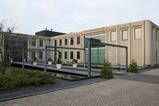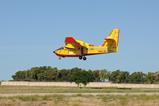Archer Aviation and NASA are to work together on future research and testing for the advanced air mobility (AAM) industry, with an initial project to focus on battery performance and safety.
The partners say the collaboration, through a Space Act Agreement, is vital to ensure the USA maintains its leadership in the aerospace industry “for decades to come”.

Key high-speed X-ray testing of the cells proposed for Archer’s Midnight electric vertical take-off and landing (eVTOL) vehicle will take place at the European Synchrotron Radiation Facility (ERSF) in Geneva, Switzerland.
Archer argues that although the supply chain for electric vehicles in the USA is maturing, that for electric aircraft remains “nascent” globally.
NASA will test Archer’s battery cell and system design and share the results across the sector “to push the entire AAM industry forward”.
The partners will examine the safety, energy and power performance capabilities of the cylindrical battery cells.
Trials at the ERSF will seek “to understand how the cells function during extreme abuse cases”.
Archer says it hopes to validate that the cells “are tailor-made for aerospace applications”, be they for eVTOL or electric conventional take-off and landing aircraft, and even “potential usage in space”.
“We’re extremely proud to partner with NASA, which has pioneered the eVTOL industry over the last three-plus decades, in support of our collective mission to ensure US leadership in aerospace continues for decades to come,” said Adam Goldstein, Archer’s founder and chief executive.
He warns that the USA is in danger of “losing its global leadership position” unless the public and private sectors collaborate.
Archer aims for its Midnight vehicle to enter service in 2025.































